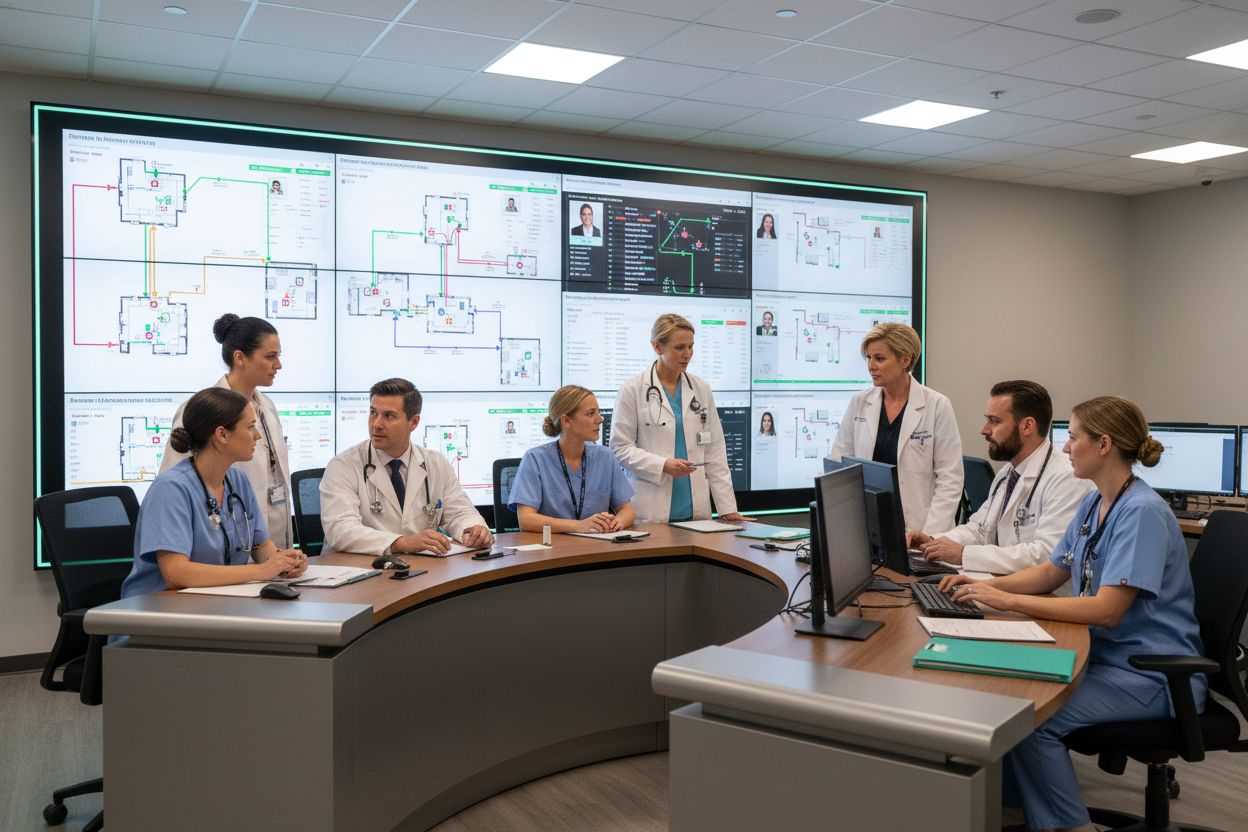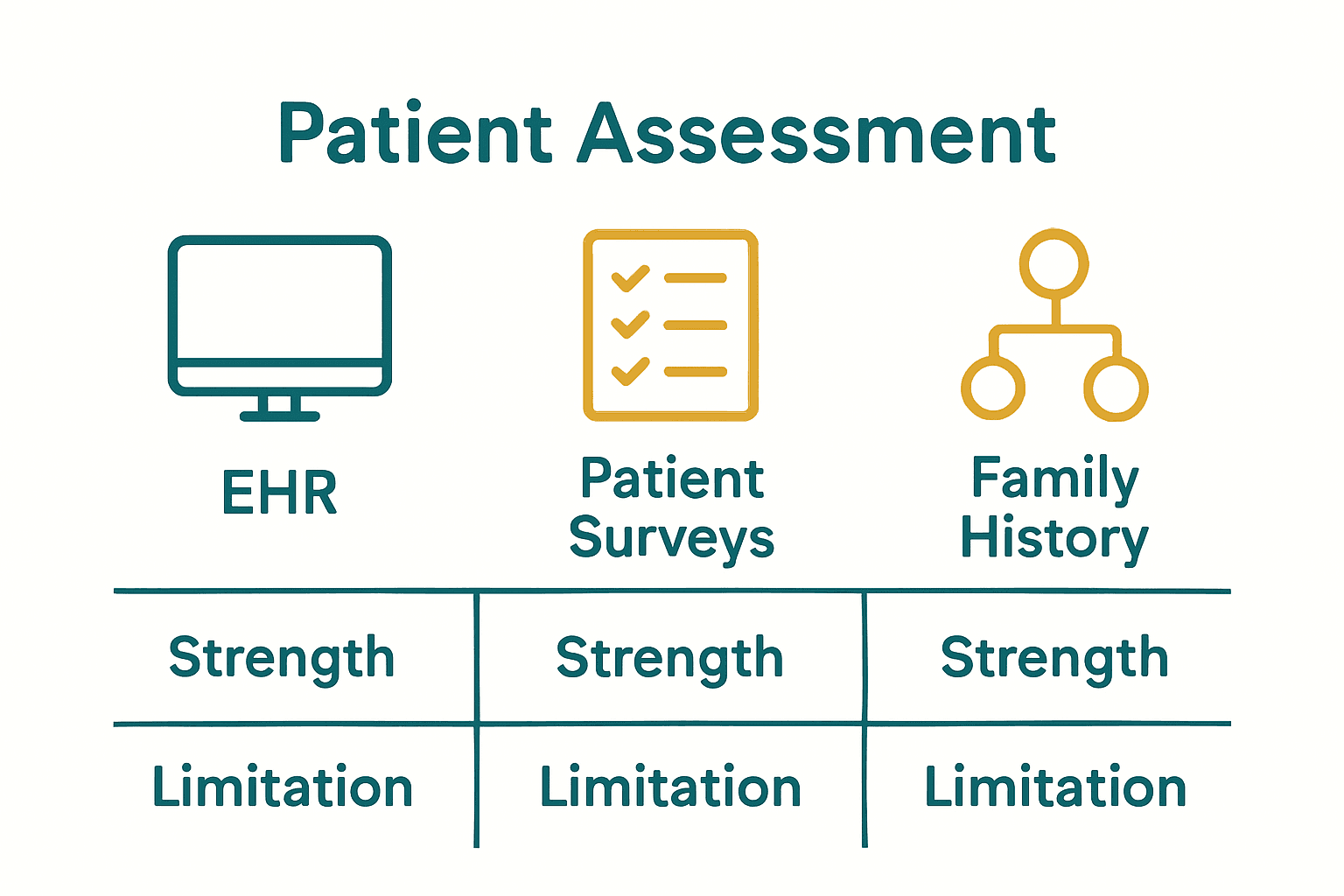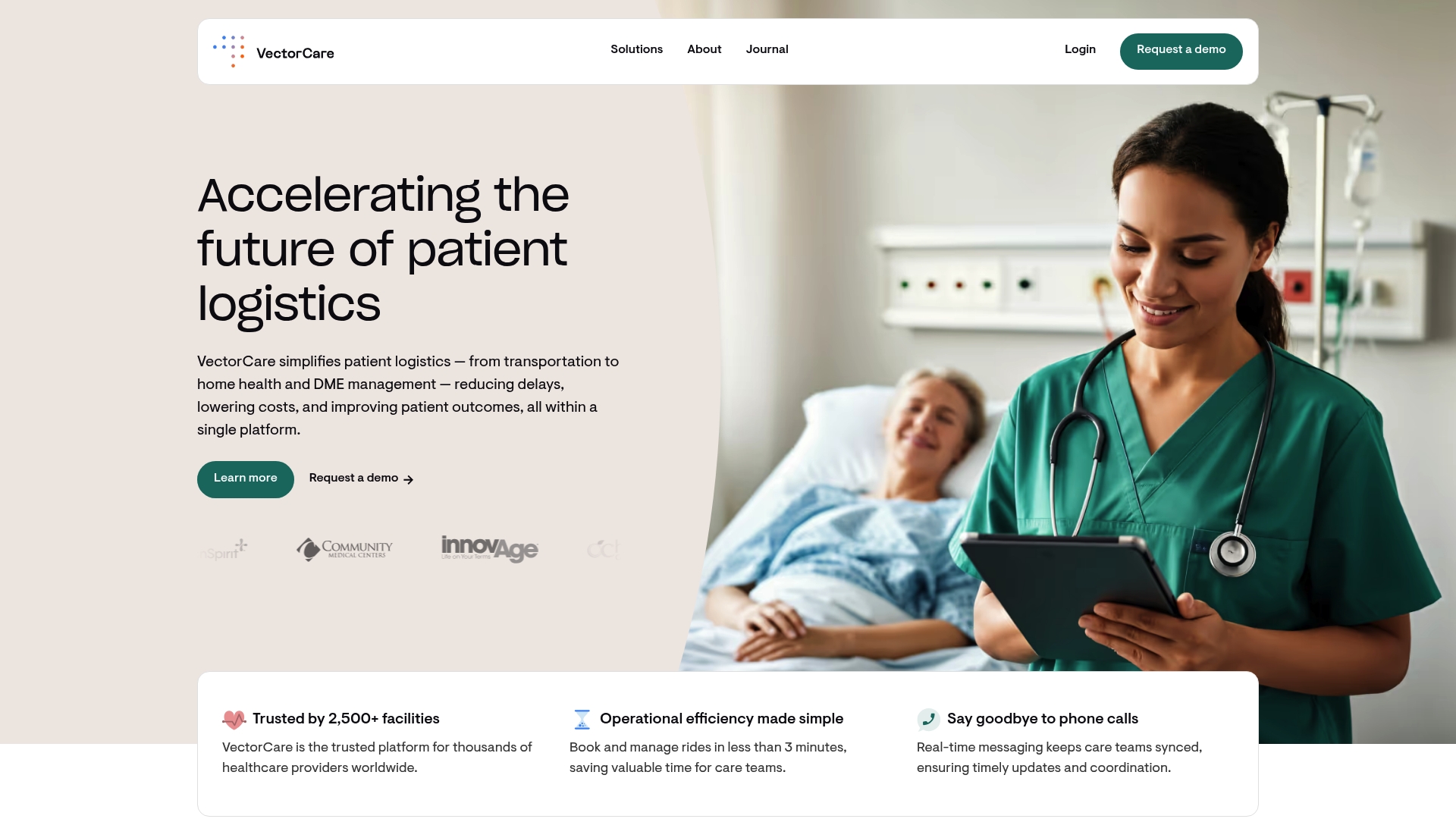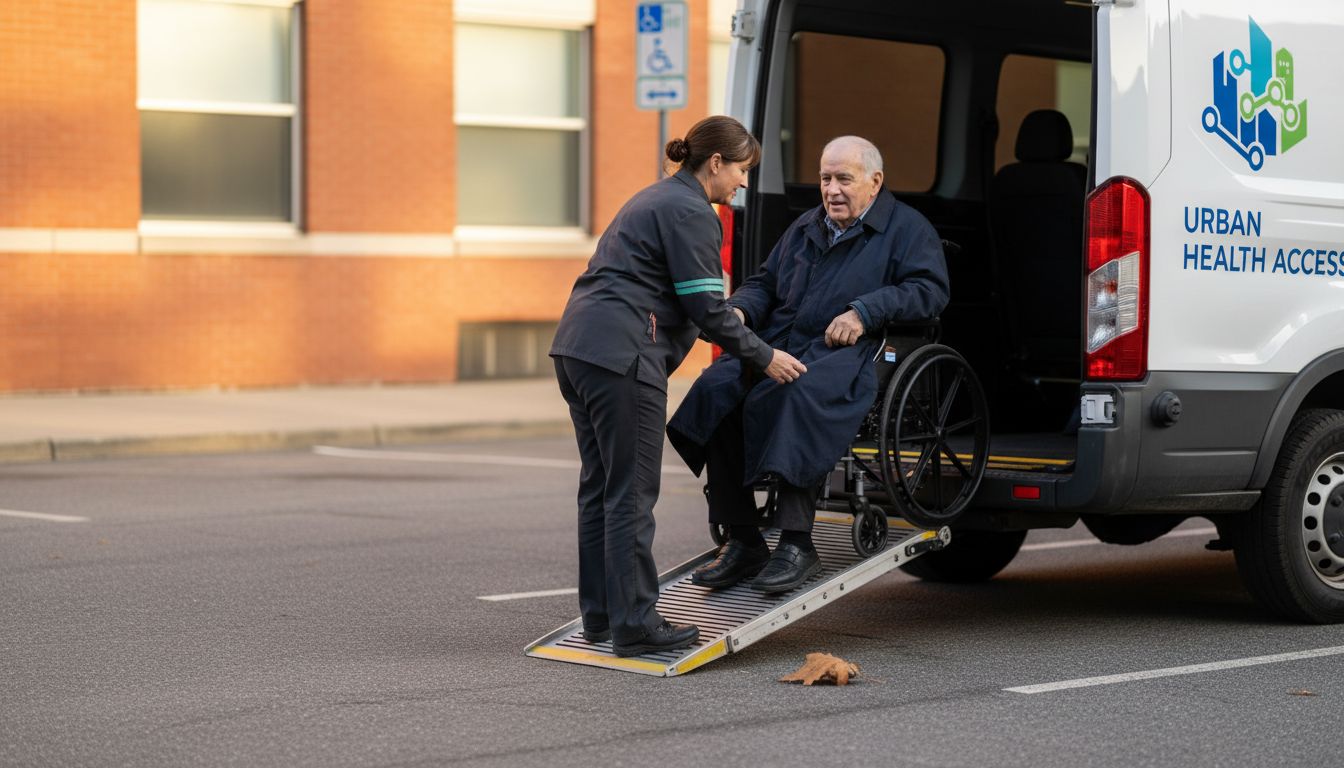Top Patient Care Coordination Tips for Better Outcomes

Did you know that over 60 percent of healthcare providers struggle to coordinate patient care across different systems? Fragmented information leads to missed health insights and delays in treatment. With so many data sources, technology tools, and stakeholders involved, building an efficient care coordination strategy can feel overwhelming. The right approach not only saves time but also supports better outcomes, smoother communication, and more reliable monitoring every step of the way.
Quick Summary
| Key Point | Explanation |
|---|---|
| 1. Gather diverse patient data sources | Collect data from multiple channels including EHRs, interviews, and surveys to create a comprehensive patient profile. |
| 2. Implement digital logistics tools | Use advanced AI platforms to integrate various healthcare data sources, streamlining communication and enhancing operational efficiency. |
| 3. Centralize stakeholder communication | Establish a secure communication hub for all healthcare stakeholders to ensure real-time access to critical patient information. |
| 4. Automate workflows for efficiency | Utilize intelligent automation tools to reduce manual tasks and improve scheduling and patient engagement processes. |
| 5. Monitor performance for continuous improvement | Set up a robust monitoring system to track metrics and optimize workflow based on data-driven insights and feedback. |
Table of Contents
- Step 1: Assess Patient Needs And Data Sources
- Step 2: Integrate Digital Logistics Tools
- Step 3: Centralize Communication With Stakeholders
- Step 4: Automate Workflows And Scheduling
- Step 5: Monitor Performance And Verify Improvements
Step 1: Assess patient needs and data sources
In this crucial step, you’ll learn how to comprehensively map out patient needs by strategically collecting and integrating data from multiple sources. Think of it like creating a detailed patient profile that goes beyond traditional medical records.
Start by gathering information from diverse channels. Electronic Health Records (EHR) provide a baseline, but research suggests they often have significant limitations. According to a recent U.S. academic study, disparities in care access can degrade EHR data reliability and clinical risk prediction models. To overcome this, supplement your EHR data with patient self reported information.
Your primary data collection strategy should include:
Here’s a comparison of the primary data sources for patient assessment:

| Data Source | Strengths | Limitations |
|---|---|---|
| Electronic Health Records (EHR) | Structured clinical info Baseline data |
Access disparities May lack context |
| Patient Interviews | Personalized insight Rich narratives |
Time intensive Subjective data |
| Self-Reported Surveys | Direct patient input Relevant lifestyle habits |
Potential for bias Data accuracy concerns |
| Family Medical History | Informs risk Identifies genetic trends |
Sometimes incomplete May lack details |
| Social Determinants Records | Adds context Highlights care barriers |
Data may be hard to collect Standardization varies |
- Clinical documentation
- Patient interviews
- Self reported health surveys
- Family medical history
- Social determinants of health records
Pro Tip: Do not rely exclusively on institutional records. Patient narratives often reveal critical health insights missed by standard documentation.
An innovative approach involves constructing personal health knowledge graphs. By integrating heterogeneous data sources like clinical databases, medical ontologies, and treatment guidelines, you create a more comprehensive patient assessment framework. This method can significantly enhance patient monitoring and support more nuanced clinical decision making.
As you compile this information, remember that data integration is an art and a science. Your goal is creating a holistic view of the patient that captures not just medical metrics but their entire health ecosystem.

In the next step, you’ll learn how to analyze and synthesize these collected insights into actionable care coordination strategies.
Step 2: Integrate digital logistics tools
In this step, you will transform patient care coordination by strategically implementing digital logistics tools that streamline communication and reduce administrative overhead. Your goal is to create a seamless technological ecosystem that supports efficient patient management.
Start by evaluating digital platforms that can integrate multiple data sources. According to industry research, advanced AI platforms are revolutionizing hospital workflows by synthesizing information from electronic health records, laboratory systems, imaging departments, and remote monitoring devices. These tools can merge complex workflows for scheduling, follow-ups, messaging, and authorization processes in real time.
Key integration strategies include:
- Selecting platforms with robust interoperability
- Ensuring HIPAA compliant data exchange
- Prioritizing real-time communication capabilities
- Implementing user friendly interfaces
- Supporting multi provider coordination
Pro Tip: Choose platforms that offer seamless data migration and intuitive design to minimize staff training time and resistance to new technology.
Professional sources highlight how agentic AI can automate multi provider coordination. By connecting different systems and workflows, these tools support continuous care transitions and dramatically reduce manual administrative tasks. This technological approach not only improves operational efficiency but also enhances the overall patient experience.
As you explore integration options, read more about VectorCare’s top integration capabilities to understand how modern healthcare logistics platforms can transform your care coordination approach.
In the next step, you will learn how to train your team to effectively utilize these new digital logistics tools and maximize their potential.
Step 3: Centralize communication with stakeholders
In this critical step, you will create a unified communication hub that connects all patient care stakeholders seamlessly and securely. Your objective is to break down information silos and ensure every team member has real-time access to essential patient information.
The foundation of effective stakeholder communication lies in selecting robust health information exchange platforms. According to research, systems like CRISP demonstrate how centralized data aggregation can transform patient care coordination. These platforms enable clinicians across different settings to access comprehensive patient information in real time from hospitals, labs, and pharmacies.
Key strategies for centralizing communication include:
- Implementing HIPAA compliant secure messaging tools
- Creating shared digital workspaces
- Establishing clear communication protocols
- Defining access levels for different stakeholder groups
- Standardizing communication formats
Pro Tip: Choose platforms that offer granular permission settings to protect patient privacy while facilitating seamless information sharing.
Professional networks like Doximity offer excellent models for secure healthcare communication. These platforms provide HIPAA compliant messaging tools that enable clinicians to discuss cases, make referrals, and collaborate within a centralized professional network. By adopting similar technologies, you create an environment of transparent and efficient communication.
As you design your communication strategy, explore VectorCare’s communication integration solutions to understand how modern platforms can streamline stakeholder interactions.
In the next step, you will learn how to establish clear communication guidelines and train your team to maximize these new collaborative tools.
Step 4: Automate workflows and scheduling
In this crucial step, you will transform your patient care coordination by implementing intelligent workflow automation that reduces administrative burden and improves operational efficiency. Your goal is to create a seamless scheduling system that minimizes manual tasks and maximizes patient engagement.
Commercial platforms now offer sophisticated solutions for integrating automated care scheduling directly with electronic health record systems. According to industry research, these technologies can dramatically streamline bookings, reduce paperwork, optimize provider schedules, and lower patient no show rates.
Key automation strategies include:
- Implementing digital form and survey integrations
- Creating automated patient onboarding workflows
- Setting up intelligent scheduling triggers
- Developing smart eligibility verification processes
- Designing automatic follow up communication systems
Pro Tip: Select platforms that offer no code visual automation tools allowing your team to customize workflows without extensive technical expertise.
Advanced U.S. healthcare solutions now provide innovative workflow automation capabilities. These systems can trigger specific actions upon scheduling events such as automatic eligibility checks, follow up reminders, and personalized messaging. By integrating with established EHR platforms, these tools create intelligent patient management ecosystems.
Learn more about healthcare workflow automation solutions to understand how cutting edge technologies can revolutionize your care coordination approach.
In the next step, you will explore strategies for monitoring and continuously improving your automated workflows to ensure optimal performance.
Step 5: Monitor performance and verify improvements
In this final step, you will establish a robust performance monitoring system that provides data-driven insights into your patient care coordination efforts. Your objective is to create a continuous improvement framework that allows you to track, analyze, and optimize your healthcare workflows.
Modern healthcare technologies now offer sophisticated performance monitoring capabilities. According to professional analyses, agentic AI systems provide built-in monitoring tools that track critical metrics such as claim processing speed, patient no-show rates, and staff workload efficiency. These data-driven dashboards enable real-time verification of operational improvements and ensure ongoing compliance.
Key performance monitoring strategies include:
- Establishing baseline performance metrics
- Implementing comprehensive data tracking systems
- Creating regular performance review cycles
- Identifying improvement opportunities
- Adjusting workflows based on empirical evidence
Pro Tip: Focus on collecting both quantitative metrics and qualitative feedback to get a holistic view of your performance improvements.
Research highlighting EHR reliability studies emphasizes the importance of continuously adjusting data inputs and monitoring prediction model performance. By including diverse data sources like self-reported conditions, you can close performance gaps and demonstrate tangible improvements in diagnostic sensitivity and care coordination.
Explore detailed performance monitoring strategies for healthcare providers to gain deeper insights into advanced tracking methodologies.
Congratulations. You have now completed a comprehensive approach to transforming patient care coordination through strategic technological integration and continuous performance optimization.
Take Control of Patient Care Coordination Today
Are you still struggling with outdated processes that create gaps in your patient assessment and coordination workflows? If you have faced issues integrating diverse health data, automating routine tasks, or establishing real-time communication among stakeholders, you are not alone. The article on patient care coordination highlights how disjointed systems, manual scheduling headaches, and fragmented communication lead to care delays, rising costs, and missed opportunities for better patient outcomes.

With VectorCare’s digital platform, you can transform these challenges into advantages. VectorCare brings together all the strategies explored in this article, offering seamless data integration, automated workflow scheduling, secure communication for every stakeholder, and actionable insights—all in one place. Experience firsthand how our integrated patient logistics tools deliver real-time updates, reduce complexity, and empower your team to provide truly coordinated care. Visit our main site at vectorcare.com to see how your organization can lower costs, improve efficiency, and achieve better patient outcomes right now.
Frequently Asked Questions
How can I assess patient needs effectively for better care coordination?
To effectively assess patient needs, start by gathering data from multiple sources, including Electronic Health Records (EHR), patient interviews, and self-reported surveys. Create a comprehensive patient profile that integrates these insights to identify specific care requirements.
What digital logistics tools should I implement to enhance patient care coordination?
Implement digital logistics tools with strong interoperability features that can merge data from various sources. Focus on platforms that allow real-time communication and are user-friendly, which can improve operational efficiency and collaboration among care providers.
How do I centralize communication among healthcare stakeholders?
Centralize communication by selecting a secure health information exchange platform that allows all stakeholders to access patient information seamlessly. Establish common communication protocols to ensure everyone has real-time access to essential data, reducing the chances of information silos.
What strategies can I use to automate workflows in patient care coordination?
Utilize automated scheduling, patient onboarding, and follow-up communications to streamline workflows. Choose tools that allow you to set up intelligent triggers for various actions, which can reduce manual tasks by approximately 30% and enhance patient engagement.
How can I monitor the performance of my patient care coordination efforts?
Establish a performance monitoring system that tracks key metrics such as claim processing speed and patient no-show rates. Create regular review cycles to analyze this data, and adjust your workflows based on empirical evidence to continuously improve outcomes.
What role do patient narratives play in improving care coordination?
Patient narratives provide critical insights that may not be captured in standard medical records. Integrating these personal health stories alongside traditional data sources can enhance your understanding of patient needs and lead to more effective care coordination strategies.
Recommended
- What Is Care Coordination? Guide for Providers and Agencies 2025
- Understanding Health Home Care Coordination
- Improving Patient Outcomes: Strategies for Healthcare Leaders 2025
- How to Improve Team Collaboration in Healthcare Settings
- Transform42 New
- Arbeitsabläufe optimieren für Notfallpraxen und Therapeuten - MediCloud Med



